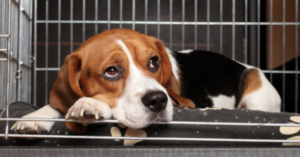
Humans have been having a tough time staying home, keeping their distance from others, and managing work and homeschooling responsibilities during the COVID-19 pandemic. Stay-at-home orders have been perfect for some family members, though. Dogs around the world have enjoyed spending tons of time with their humans. Now that we are transitioning back to work and school, we need to prepare our dogs for this new normal.
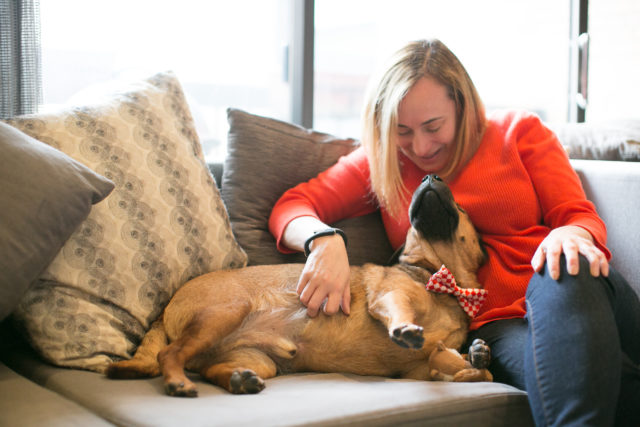
Your Dog is Used to Having You Around
For the last few months, dogs have loved having their humans home all day every day. Dogs are getting more belly rubs, couch time, and attention from their people than ever. They have enjoyed going out for walks every day, sometimes more than once. Most of all, they have loved the security of being near you all the time and rarely being alone. The transition to a new normal is going to be tough on all the members of the family. Dogs are going to have the “ruffest” time of all.
Separation Anxiety and Loneliness to be Expected
Many dogs suffer from separation anxiety. In fact, 20 to 40 percent of dogs who see a veterinary behavioral specialists suffer from this disorder. Separation anxiety makes your dog feel worried, afraid, and lonely. It can also lead to acting out, such as compulsive self-soothing or destructive behavior. Dogs that were never anxious or lonely before may experience it during this transition. Things have been so different for them, in a very good way. Spending a long stretch of time alone is going to be a major adjustment.
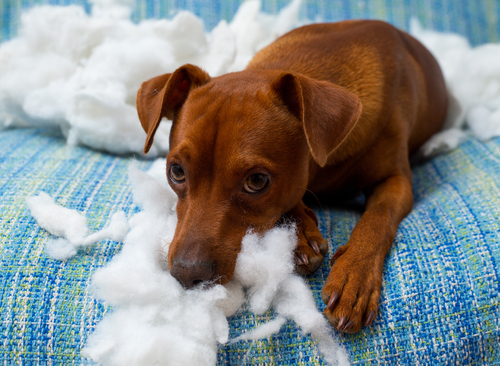
Showing Your Dog What to Expect
We can’t tell our dogs that things are about to change again. We can’t just sit them down and say, “Mama has to go back to working at the office now.” We talk to our dogs all the time, but this is a conversation that has to happen with actions, not words. To get our dogs ready for the new normal, we have to show them what to expect. Dogs thrive with a consistent routine. Now is the time to start showing them what the new routine will look and feel like.
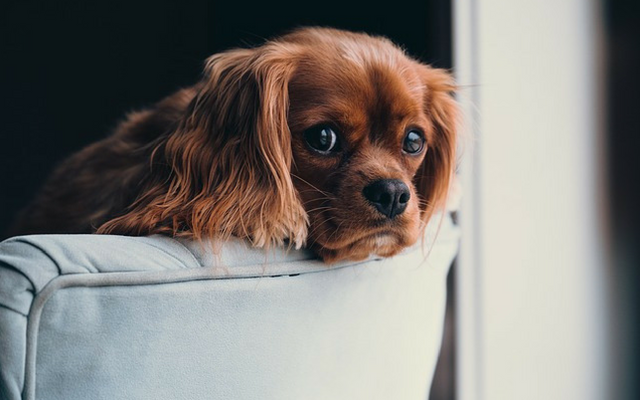
9 Ways to Establish the Post-COVID-19 Routine
#1 – Go Through Your Work Morning Ritual
Start setting your alarm for the time you need to rise to get to work on time. Go through your usual rituals of getting ready, having coffee, and feeding the dog. Whatever your normal morning will look like, start going through those motions on a daily basis. Your dog will notice the change and start expecting it to happen that way. This will also help you get back into the swing of things, especially if your work-from-home COVID-19 routine was more relaxed.
#2 – Pretend to Drive to Work
Every work day at approximately the right time, get in your car, and pretend to drive to work. Take a trip around the block, make a run for some coffee, or just drive down the street and check your email from a parking spot. The idea is to show your dog that you are going to leave and, more importantly, come back. The jury is out on how a dog perceives time, but we all know that our dogs jump for joy when we return, whether it has been 15 minutes or 8 hours.
#3 – Practice Crate Training
Most dogs love their crates! They feel safe and secure inside them. Now is the perfect time to start using your dog’s crate in daylight hours on a regular basis. Every time you leave the house, secure your dog in the kennel. If you don’t leave the house, have your dog go into the crate a few times a day for a nap. This will get your dog used to being alone and relaxed during the day.

#4 – Implement a Regular Walking Schedule
Think about what time you will walk your dog when you are back to work away from home. Will you walk in the morning before you leave? Will you take a stroll in the evening after dinner? Will your lucky pup get a walk before and after work? Choose a regular schedule and start adhering to it. This is all about setting expectations ahead of time to minimize the surprise and emotional impact on your dog.
#5 – Prepare Comfort Items
Your dog finds great comfort in your scent. One of the ways that humans can help their dogs feel safe and secure when they are alone is to leave something that smells like them behind. It may sound weird, but dirty clothes or well-used pillows are great choices. The Comfort Cuddler is a perfect choice. Stuff the soft toy with something that smells like you and your dog cuddles up! Best of all, purchasing this item also helps to feed shelter dogs in need!
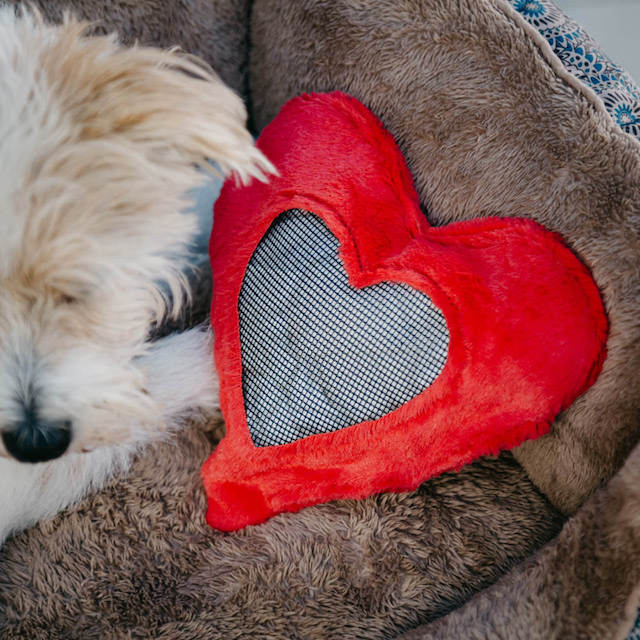
#6 – Don’t Take Your Dog Everywhere You Go
Let’s face it. We have all been feeling isolated. Our dogs have helped us through this time by being there for us all day every day. They have been our constant companion and our sidekick. If you are like most of us, your dog has been running errands and going for car rides more often than usual during social distancing. In order to prepare your dog for a return to normalcy, leave them home more frequently when you go somewhere.
#7 – Stock Up on New Toys
Your dog will feel less bored and more engaged with a stockpile of new toys to choose from. Treat puzzles are always a good choice. They get your dog’s mind working and rewards your dog’s efforts with a tasty morsel. New balls, squeaky toys, stuffed animals and any other new dog toy will help keep your dog excited and occupied while you are at work. Go ahead and stock up the toy basket, but make it last! Give your dog a new toy every day or two so your dog starts connecting your departure for work with a special gift.
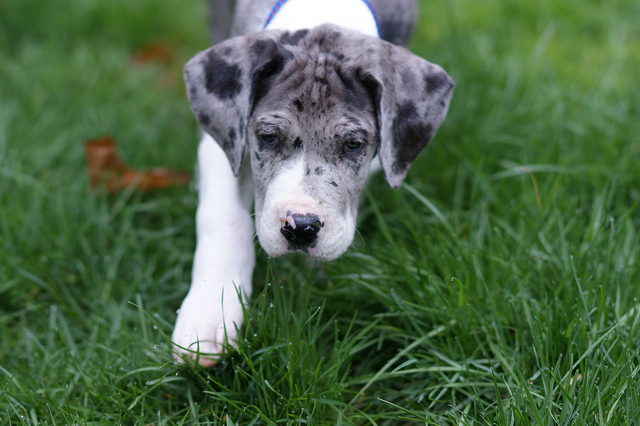
#8 – Potty Break Planning
Your dog has probably gotten used to going in and out of the house dozens of times a day during COVID-19. You want your dog to be successful at holding it while you are away from work. You also want to avoid stress-induced reverse potty training. Start practicing ahead of time. Let your dog out to take care of business before your normal workday starts. If possible, don’t them out again until your normal arrival time. This will help your dog get used to holding it again and should make for an easier transition.
#9 – Come Home for Lunch
If possible, plan to come home in the middle of the day for your lunch break. Alternatively, you can take a break from work at a more convenient time. Use this time to pop in at home. This will reassure your dog that when you leave, you always come back. It will also give you a chance to let your dog out to relieve himself if needed. If coming home during the workday is not feasible, consider hiring a pet sitter or asking a neighbor or friend to check on your dog during the day.
“It was the best of times, it was the worst of times…” That famous excerpt from Charles Dickens’ A Tale of Two Cities sums up quarantine life perfectly. Being together has made immeasurable positive impacts on families, including the four-legged family members. As the world attempts to return to normal, set your dog up for an easier transition. And look forward to some epic “so happy to see you” moments when you return home from work those first few weeks.
The post 9 Ways To Get Your Dog Ready For Your Return To Work appeared first on iHeartDogs.com.
via Whisker Therapy